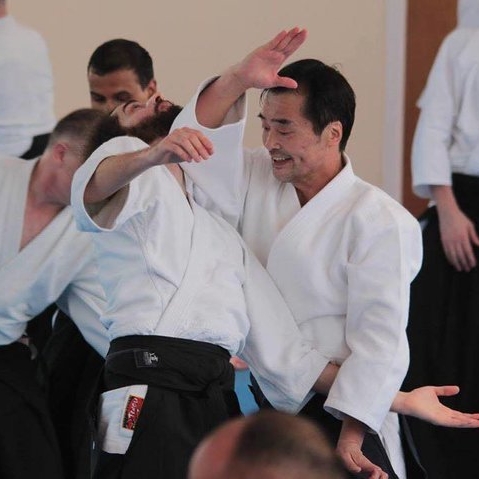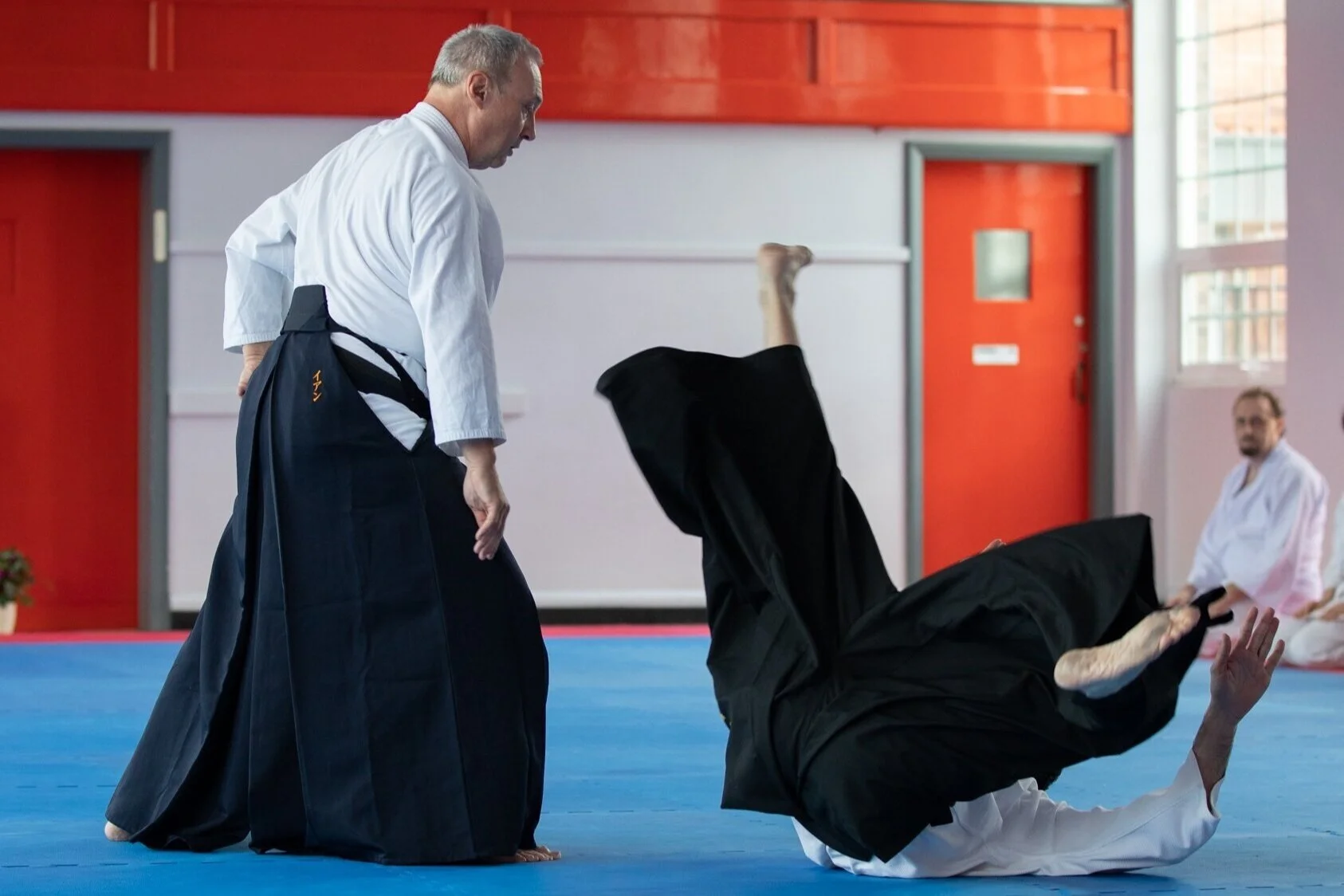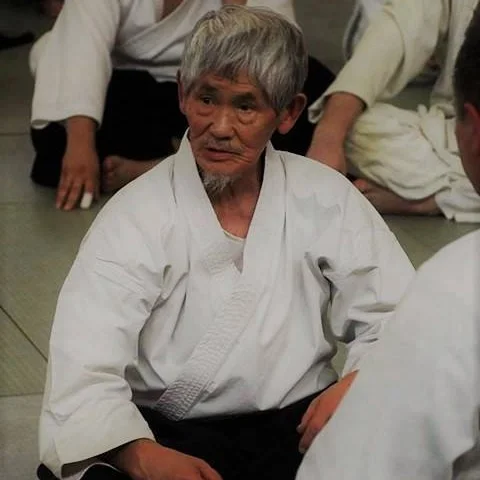BAF Summer School
Every year the BAF organise a UK-wide summer school. This gives club members an opportunity to attend classes lead by an instructor from the Hombu Dojo in Tokyo, as well as senior instructors from the UK.
BAF SUMMER SCHOOL IS NOW TAKING BOOKINGS FOR 2025
This year the course will be held in Chester between (Dates TBC). Further information and booking details can be found at the Summer School website. We strongly encourage all members to attend at least one day as it is by far the easiest way to meet and train under a professional Hombu instructor. If you have any questions, or require assistance with travel/accommodation, please feel free to contact us.
Instructors, Past AnD Present
Location
The BAF summer school is held at The University of Chester Parkgate Road Campus. The campus has onsite car parking and is reasonably near Chester railway station.
Accommodation
Summer school attendees are generally encouraged to reserve onsite accommodation through the summer school web site. However, if campus accommodation is unavailable or undesired, there are several hotels in the surrounding area which may have rooms.
THE SHO-BU-KAN 40TH ANNIVERSARY LOGO
Having moved from the West Midlands to South Wales, Barry Island to be exact, I was keen to continue practicing my Aikido, and, at a high level, one where I continue to learn and progress. After a quick investigation I was delighted to see that ShoBuKan, the dojos of Peter Gillard Shihan, were not only close by, but that I was made very welcome by Mr Gillard and the members.
Over the last year, I have integrated myself into the dojo’s and made lots of new friends. Moreover, the dedication and determination of the ShoBuKan students and their desire to learn has been a breath of fresh air. Mr Gillard asked me to look after the dojo in Sully whilst he had double knee surgery and I was honoured to be asked to instruct during his absence. I am enthusiastic about Aikido and wondered how else I could be of benefit.
With this in mind I felt the need to help in some other way.
ShoBuKans 40th anniversary was discussed a number of times over a beer or two at the chapter dojo and I felt it would be a good idea to see if there was a possibility for something unique and meaningful, not only to ShoBuKan, but to the instructional direction of Mr Gillard.
Mr Gillard is a dedicated student of Yamashima Shihan and is consistently advising his students of the need to “Cut the Centre”, a high and essential function of Aikido practise taught by Yamashima Shihan. With this concept in mind I thought it would be a good idea to incorporate this into a suitable logo, one that could not only be used for the 40th Anniversary celebration but also encompass the essence of what Mr Gillard and ShoBuKan is.
My plan was to use this logo as the embroidery on Polo or T shirts and the screen print on a celebratory towel or Tenugui (手ぬぐいtraditional Japanese towel).
As a result of my position I have the honor of having a long working and friendship-based relationship with the staff of the international department at Aikikai Hombu Dojo and so I enlisted the help of Ruriko Yokoi to help in creating a design. The design was to be the Ensō, the budo circle, with the words “Cutting the Centre” in the centre of the circle and ShoBuKan below. Everything was to be created in the traditional Japanese way.
In Zen Buddism, Ensō (円相 , "circle") is a circle that is hand-drawn in one or two uninhibited brushstrokes to express a moment when the mind is free to let the body create. It sometimes means “circle of togetherness”. The Ensō is a manifestation of the artist at the moment of creation and the acceptance of our innermost self. It symbolizes strength, elegance, and one-mindedness.
The Japanese for "Cutting the Centre" is中心を切るbut was to be written top to bottom in the traditional style.
中
心
を
切
る
The Japanese for "ShoBuKan" is 尚武館 but was to be written right to left 館武尚 at the bottom in the traditional style.
I asked Ruriko san if she knew a company that would create the Shodō (書道calligraphy) for the logo. A few days later she said that she would ask Suzuki san, who works in the calligraphy department of Hombu writing the Yudansha certificates, to create the Shodō. He responded positively, saying that this would be considered as a hobby and that could he have a Polo shirt (as payment) when the work was done. I was delighted. Suzuki san created 3 Shodō and sent them to me for use in creating the files for the embroidery and the screen prints for the Tenugui. I chose the best images of each of the three Shodō to create the files.
The Shodō was painted by hand brush on “Hanshi” (韓紙special paper for Shodō).
The original Shodō chosen was presented to Mr Gillard at the Chapter Dojo in October 2019 with copies made using similar paper to the Hanshi, presented to each of the ShoBuKan Dojo’s.
The actual translation of the Japanese is “Cutting the Centre Point” The red seal or Māku 印 at the top is that of the year 2020 the Rat year. The red seal at the bottom is that of the Suzuki family, the artist. This will be used on the Polo/T shirts as a date or event neutral logo.
The Tenugui are wrapped in a special envelope "Noshi" のしof type Tanzaku noshi短冊熨斗, with Cho-Musubi (butterfly knot) 超むすび
Noshi:
A noshi origami is a decoration put on the upper right-hand side of a celebratory envelope.
People used to send dried and streched abalone, noshi-awabi, for celebrations.
These days, noshi origami are used to represent the ablalone (wrapped in paper) and are attached to the envelope.
There are 3 types of knots:
(1) Cho-musubi (butterfuly knot) 超むすび:
For celebrations that one would wish to be repeated.
(2) Musubi-giri むすびぎり:
This is for a celebration that one would not wish to be repeated,
such as a wedding, a celebration after recovering from a sickness, etc.
(3) Awabi- / awaji-musubi (abalon knot) あわじむすび:
This is a type of musubi-giri knot that cannot be untied by definition. People use this knot in both celebratory and noncelebratory situations in Kanasai area.
Guy Needler
Sho Bu Kan
Powered by Squarespace








